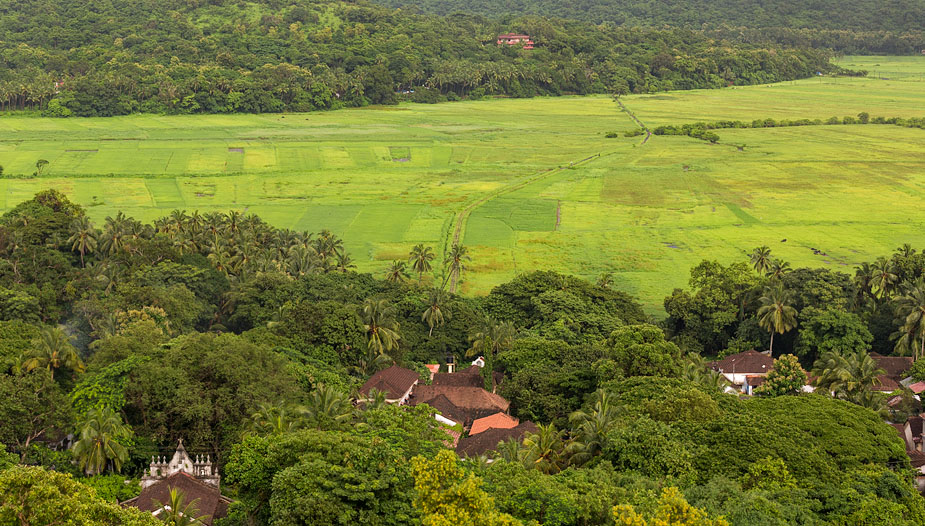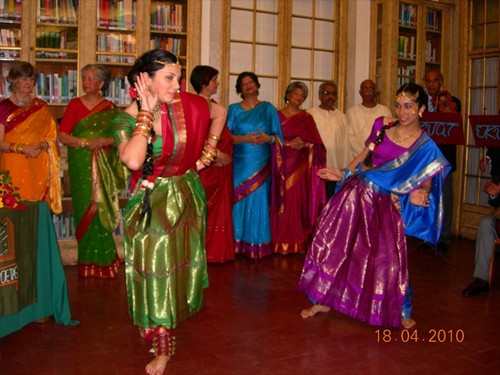Vim para enterrar César, não para
louvá-lo.
O bem que se faz é enterrado com os
nossos ossos,
que seja assim com César.
William Shakespeare, Julius Caesar, Acto III,
cena 2.
Devo
começar por dizer que estou bastante escandalizado com a recente tendência que
notei, especialmente depois da morte do Manohar Parrikar, ex-Chefe Ministro de
Goa, de elogiar sem reservas as figuras públicas e não refletir sobre alguns
aspetos mais negativos do seu carácter ou sobre as suas intervenções na
sociedade. A falta de reflexão aspetos menos atraentes da sua personalidade é
uma indicação dos tempos perturbados em que vivemos, onde a crítica é vista
como criticismo e desrespeito, não sendo sequer tolerada.
Gostaria
de acrescentar que a crítica é a reflecção desapaixonada ou imparcial, que deve
examinar ambos aspetos, positivos e negativos e refletir também sobre as razões
mais profundas para estas qualidades. Por tanto, hoje, gostaria de começar com
uma reflecção desapaixonada sobre alguns aspetos da vida de Teotónio. Preferia
começar com o elefante na sala, com o facto de Teotónio ter sido uma pessoa
difícil, especialmente em contextos profissionais.
Teotónio era uma pessoa rabugenta, ficava ofendido facilmente e frequentemente maldisposto em ter que reconhecer o trabalho de jovens acadêmicos, especialmente se estes não vinham ao beija-mão. Ai deles que o contradissessem, pois era certo que se montaria de imediato uma cena pública que destruísse o seu trabalho.
Seria
fácil atribuir estas características claramente negativas só a Teotónio. As
suas fraquezas, enquanto suas, foram também produto de um certo contexto social
e Goês. Contexto este onde ele nasceu e dentro do qual trabalhou e contribuiu.
É uma
crítica constante que faço à comunidade Goesa, seja em Goa ou na diáspora, o
não reconhecimento dos esforços dos seus filhos. Se não pertencem a uma família
ou casta poderosa é quase garantido que a pessoa que desenvolve qualquer
trabalho interessante até importante irá trabalhar sozinho, sem aplauso do
resto da comunidade. O facto que qualquer reconhecimento, se vem, vem muito
tarde, quando estes já estiverem mortos, implica que pessoas que se esforçam
por articular novas perspetivas e criar novas iniciativas trabalham sem
qualquer consolação. O caso de Teotónio é um exemplo perfeito. Conheço apenas
um reconhecimento de Teotónio enquanto académico, o festschrift
intitulado Metahistory. History Questioning History. Festschrift in Honour
of Teotonio R. De Souza, tenho certeza que não foi uma iniciativa de
alguma instituição Goês.
É um
facto que trabalhar solitariamente sem reconhecimento pode ter um impacto
corrosivo na alma. Torna-nos amargos, com tendência a que nos gabemos sobre os
nossos sucessos e sem vontade de reconhecer o trabalho dos demais. A final, se
ninguém reconhecer o meu trabalho, tenho que ser eu a faze-lo, verdade?
Isto
não é apenas o caso do Teotónio, mas o caso de vários outros Goêses ilustres
que tive a oportunidade de conhecer e é um facto que me deixa muito triste.
Para re-enfatizar o que distingue as comunidades Goêsas no mundo não é somente
a falta de institucionalização, mas também a falta de investimento na sua vida
intelectual. Há já vários anos que tem havido um crescente interesse académico
em Goa. Enquanto este acontecimento é bem-vindo, há também um perigo porque Goa
esta a ser definida por académicos não Goeses e serão, consequentemente as suas
agendas, ou seja, as suas preocupações, que irão determinar a representação dos
Goêses. Creio que Teotónio percebeu este problema. Ele quis articular uma
identidade Goêsa diferente do que dos Portugueses e ficou rabugento porque
percebeu que era a única voz a desenvolver esta tarefa. Isto não sugere que
concordo com a sua posição. Separadas por gerações, a minha perspectiva sobre a
identidade Goesa é substancialmente diferente. Enquanto a posição de Teotónio
era a do nacionalismo Indiano, a minha é influenciada pela necessidade de
combatê-la. Mas acho que poderíamos concordar que tem que haver mais
investimento Goes na sua propria representação.
Creio que
grande parte da sua antipatia surgiu também da sua posição social. Bramane, mas
não tanto. Percebi essa peculiaridade depois de ler a introdução do seu
livro Goa To Me (1994). Fiquei muito comovido pelos detalhes que
partilhou sobre a sua vida íntima e pareceu-me um acto de coragem e
honestidade. Este texto mostra de fato a crueldade do sistema de castas entre
Goeses e demonstra o fato pelo qual somos incapazes de criar uma saudável e
vibrante identidade Goêsa. Na nossa sociedade enfatizamos sempre a nossa
posição social, e portanto diferença em vez de enfatizar semelhanças e criar um
sentido de comunidade. Tenho uma história para partilhar convosco a este
respeito. A minha primeira experiência de Lisboa quando cheguei para participar
na reunião de Goeses pelo mundo, organizada pela Casa de Goa alguns anos atras
(talvez 2007?). Fui nessa altura a Coimbra por um mês e utilizei esta
oportunidade para almoçar com Teotónio antes da reunião. Durante o almoço,
Teotónio partilhou comigo a sua leitura das políticas entre as comunidades
Goesas em Lisboa, apontando os conflitos entre castas e como naquela altura a
Casa de Goa era dominado por brâmanes.
Cheguei
à Casa de Goa equipado com esta informação. Foi cumprimentado por uma pessoa e
foi-me dirigida aquela muito antiga questão Goesa “De onde és em Goa?” Atenção
que a pergunta não funciona como quebra-gelo numa conversa, mas para localizar
a posição na hierarquia das castas da pessoa a quem é dirigida a pergunta.
Normalmente não participo neste jogo, sempre indico que cresci em Pangim ou que
moro em Dona Paula, mas deste vez indiquei que as minhas origens na Ilha de
Divar. “ah!” respondeu a mesma pessoa, adicionando, “somos de Margão!”,
demonstrando a sua posição superior na scala bramanica. Prometi a mim mesmo
que nunca mais participaria neste jogo. Não é minha intenção sugerir aqui que
este é o caso na Casa de Goa, mas esta é uma atitude com a qual temos que lidar
firmamente.
Acho
que vou deixar as minhas reflecções por aqui, porque suspeito que ja tenha gasto
mais do que o tempo que me foi alotado. Agradeço a vossa atenção, e a Casa de
Goa pelo convite. Desejo descanso eterno a Teotónio e agradeço o trabalho por
ele desenvolvido.
(Apresentação
proferida na Conferencia sobre a vida do Prof. Teotónio de Souza Casa de Goa,
Lisboa – 22 March 2019)



















